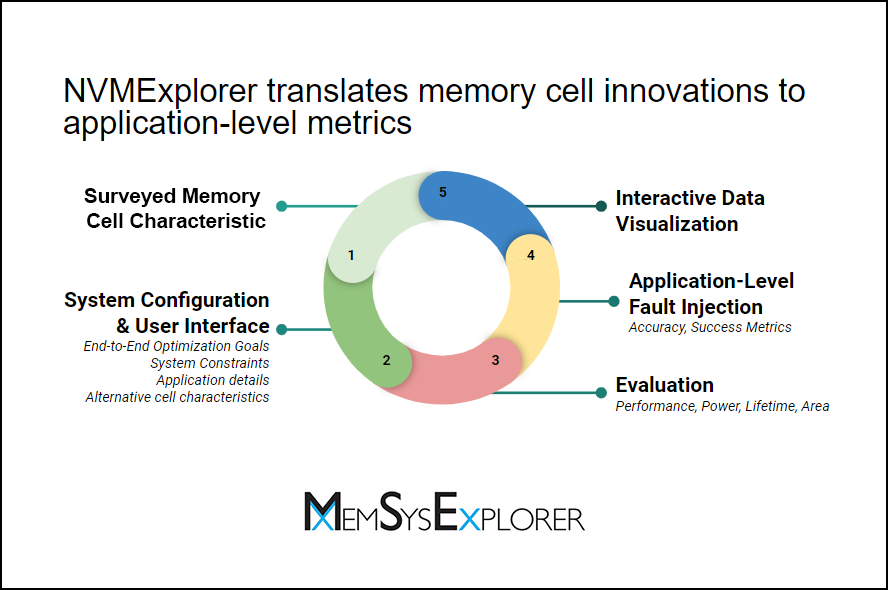Accelerating next-generation computing systems

By Cansu Birsen, E25
Researchers from the Tufts University Department of Electrical and Computer Engineering, in collaboration with colleagues at Amherst College and Harvard University, recently received a Community Infrastructure for Research in Computer and Information Science and Engineering (CIRC) grant from the National Science Foundation (NSF). This prestigious grant will support the team’s creation of a research tool and infrastructure called MemSysExplorer, designed to revolutionize the exploration and evaluation of memory systems in computer architecture.
Team members on this project include Tufts faculty and co-principal investigators Associate Professor Mark Hempstead and Assistant Professor Marco Donato, working alongside Assistant Professor Lillian Pentecost of Amherst College and Robert & Suzanne Case Professor Gu-Yeon Wei and Assistant Professor Gage Hills of Harvard University. The project addresses the need for innovative memory solutions following the quick growth of data-intensive applications.
Traditionally, memory systems have relied on conventional technologies like static random access memory (SRAM), dynamic random access memory (DRAM), and magnetic disks or flash drives. In recent years, over a hundred new proposals for different memory designs have emerged at varying stages of development and deployment, each with its costs and benefits. However, it is difficult for a hardware designer or programmer to predict how a specific new memory architecture will affect the speed and energy consumption of a new computing system.
MemSysExplorer aims to address this gap by providing the research community with the tools required to explore this new complex design space. The framework is intended to help researchers identify principled design solutions that satisfy the requirements of their applications and system architectures. We can think of this system as a GPS navigation tool for memory system design, guiding researchers through the complex terrain of memory technologies and architectures by providing the optimal route tailored to specific preferences and constraints.
Not only will the tool present evaluations of the holistic impact of specific design optimizations, but it will also enable the research community to collaborate across disciplines and contribute to the tool and datasets. Ensuring accessibility through its web-based interface is also a key aspect, as this tool’s other goal is to introduce students and early practitioners to new computing research problems in which memory plays a leading role.
Learn more about Associate Professor Mark Hempstead, Assistant Professor Marco Donato, and the NSF CIRC program, which supports projects that drive discovery and learning in the computation field.
The content of this article is solely the responsibility of the authors and does not necessarily represent the official views of the National Science Foundation. Research reported in this article was supported by the National Science Foundation under award number 2346435.
Department:
Electrical and Computer Engineering